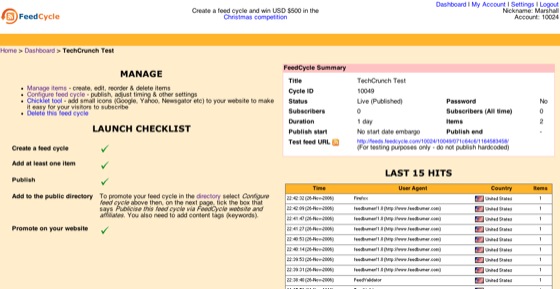FeedCycle is a new tool that provides an interesting level of control to publishers of RSS feeds with a very simple interface. If you are telling a multi-part story, or communicating a segmented message over time, you should give FeedCycle a look. Publishers can use FeedCycle to create publication schedules and intervals; all subscribers then start by receiving the first item in a feed regardless of when they subscribe and future items are delivered at the intervals determined by the publisher. Text, audio and video podcasts can all be scheduled and delivered with FeedCycle.
FeedCycle is a product of UK travel tech consultancy Travel UCD. Many of the company’s example feeds are serialized travel stories. Having access to all information at once has clear value, but the old fashioned serialization of stories has a distinct impact on audiences that this company is smart to tap into as a service provider.
Stories serialized through FeedCycle can be offered by RSS without being delivered all at once – I can subscribe to and watch a series of video podcasts, for example, without the last episode being visible to me until I’ve seen the episodes before it. If I ran a business, I could prerecord a series of training sessions, each new employee could subscribe to the series and then get a new session delivered in sequence at regular intervals.
FeedCycle feeds can also be run through FeedBurner for more detailed analytics than the service itself offers. The service has a hefty feature list in the free version and offers premium subscription for features like the use of your own domain, pass word protected and encrypted feeds. All versions of the service support tagging and OPML export by batch or tag.
Episodes can be reordered by drag and drop, attachments are well handled by pointing to a URL and the resulting feeds validate. You can select a window of dates for publication and items can be published at regular intervals ranging between one hour and one month apart.
I love RSS in large part for all the services built on top of it. FeedCycle is another example of a smart, easy way to leverage feeds. It’s not something that most bloggers will end up using, but there are far more uses of RSS that we’ll be seeing in the future as consumer and enterprise feed readers, RSS integration in other applications and tools like Ajax startpages proliferate. This is a tool that non temporally-bound online communicators could make great use of. If you’re concerned that your subscribers don’t widely use RSS yet, it would be just as easy to offer scheduled deliveries through an RSS-to-email service as well.
